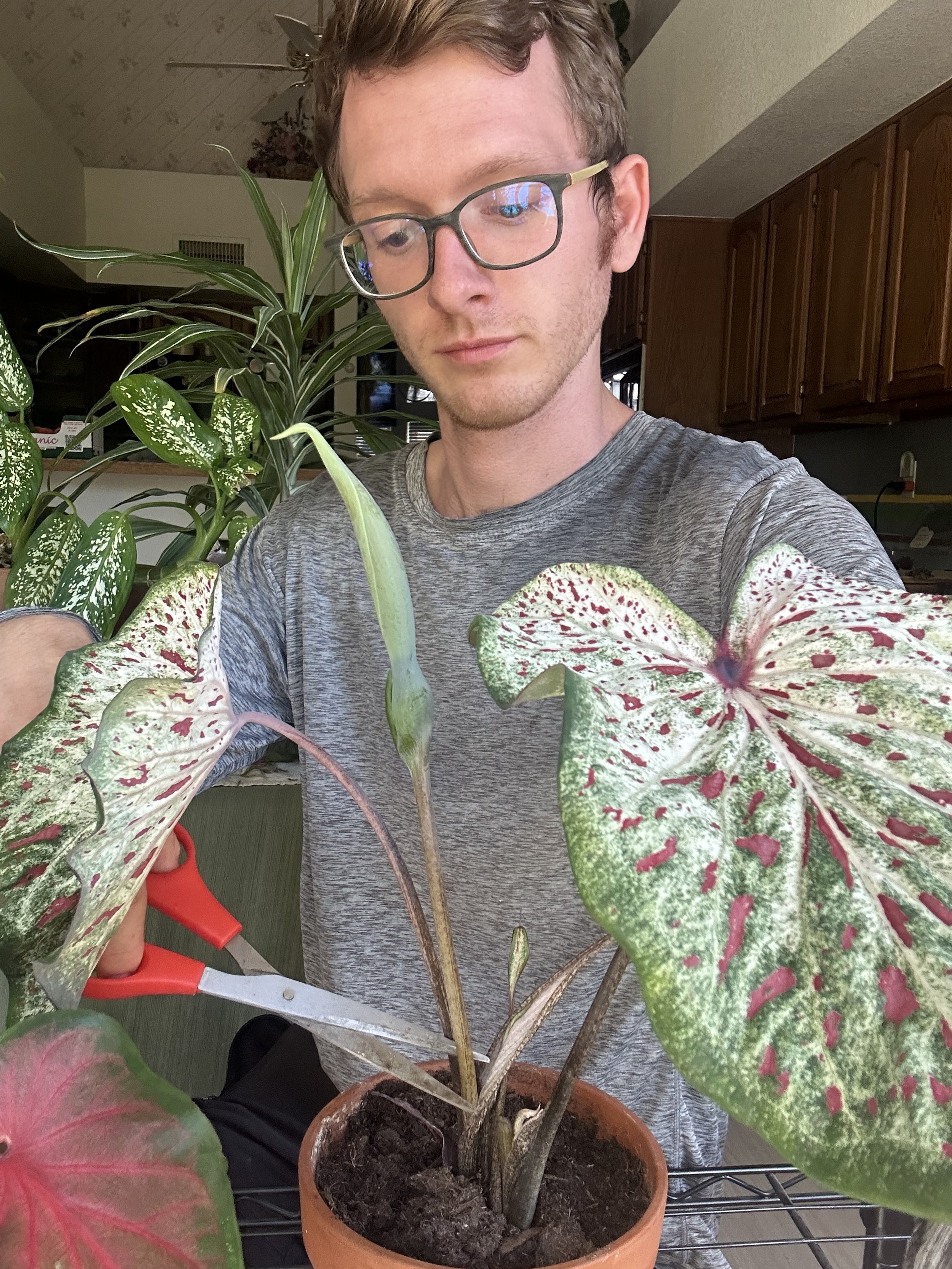How to grow Caladiums
Overview:
Caladiums are a beautiful foliage plant that has elephant ear-like leaves. They come in so many different shapes, colors, and sizes. Typically these plants like shadier conditions, but now they have bred varieties that can take full sun in humid climates ( not in Arizona though!).
You can pair them with lots if different flowers for a beautiful combination. I like to pair them with begonias, and sweet potato vines.
How to grow:
Caladiums are typically grown from tubers, a root that resembles a potato. I typically like to plant them outdoors once soil temperatures ( or night temperatures) are above 50 degrees. These plants like it warm! Start them indoors 6-8 weeks before you expect to see night temperatures in the 50’s. Here in my zone 9b Arizona garden, I like to start to plant them out in Late April or early May, so we start them beginning of March indoors under growlights. Typically I plant them indoors in old nursery pots and cover them with about 1 1/2” of soil under grow lights.
Caladiums do not like wet feet, so make sure that they dry in between watering. Do not overwater. Give them minimal water until you start to see sprouts. Make sure the soil dries out completely in between waterings.
When selecting a site for your caladiums after they emerge, pick a well-draining spot. They prefer sandier soil that can dry out in between waterings or in containers. Make sure to not let it dry out for too long, they like consistent moisture.
Caladiums will go dormant for the wintertime. They are not dead! Keep the plant in temperatures above 50 degrees, out of direct sunlight. Once you see the plant losing the majority of its leaves in the fall, back off on watering until it completely dies back. You can plant them again or begin watering again in spring. If they are in the ground, make sure the area does not get too much water during this time to avoid rot.
Fertilizing:
Caladiums do not need a lot of fertilizer. Give them a balanced granular fertilizer at the beginning of the growing season, and again in the middle of their growing season.
Pruning:
Remove dead or damaged leaves as they appear. Caladiums will keep growing new leaves throughout their growing season. Prune off bloom spikes as they appear. Doing so will divert more energy back into the roots so they can focus on growing leaves. The flowers are rather insignificant and do not add to the beauty of the plant.
This is a great example of flowers that can be pruned off of your caladiums. Cut down to the base of the stem.
Types of Caladiums:
Caladiums are primarily broken down into two types. Fancy leaf and Strap leaf. Fancy leaf varieties have a wider ‘heart-shaped’ leaf and are typically bigger plants. Strap leaf varieties are typically smaller in size compared to the fancy leaf (not all) and have longer narrow leaves.
Strap leaf caladiums in a terra cotta pot under my bottle tree. ‘Gingerland’ has a white leaf, with green margins and red speckles. It gets to be about 12-24” tall.
It’s hard to tell but there is a second variety of caladium below the ‘Gingerland’. The shorter strap leaf, with white leaves and green margins, is ‘White fang'. It has a skinner leaf that tops out at 12”. In retro speck, I probably would not plant the two together, because they look so similar, but super pretty nonetheless!
Beautiful assortment of caladiums in small pots. On the left, ‘Candidum’ (fancy leaf) red caladiums are ‘Dragonheart’ ( strap leaf) and in the middle we have a ‘Gingerland’ strap leaf.
I saw these stunning baskets while I was at my Horticulture internship at Walt Disney World. This was in Germany at Epcot in Florida. I don’t know what this variety is, but the redish brown color matched the color pallet perfectly.
Fancy leaf caladium ‘Candidum Jr’ with its bright white leaves and green veins is a show stopper in the shade garden. I putting white in the shade garden to brighten up the space. I paired it with difference textures of plants such as the foxtail fern behind it and the bright chartreuse sweet potato vine.
Caladiums as houseplants:
Since these plants can tolerate shade, it makes them great candidates for houseplants. For best results, place them in a bright window with indirect light.
Featured ‘Candidum’ jr, ‘sweetheart’, ‘Miss Muffet’ and ‘Dragonheart’ Caladium. These are grown indoors in terra-cotta pots for best drainage. They are near a northwest facing window with bright light all day. Water when soil is try.











